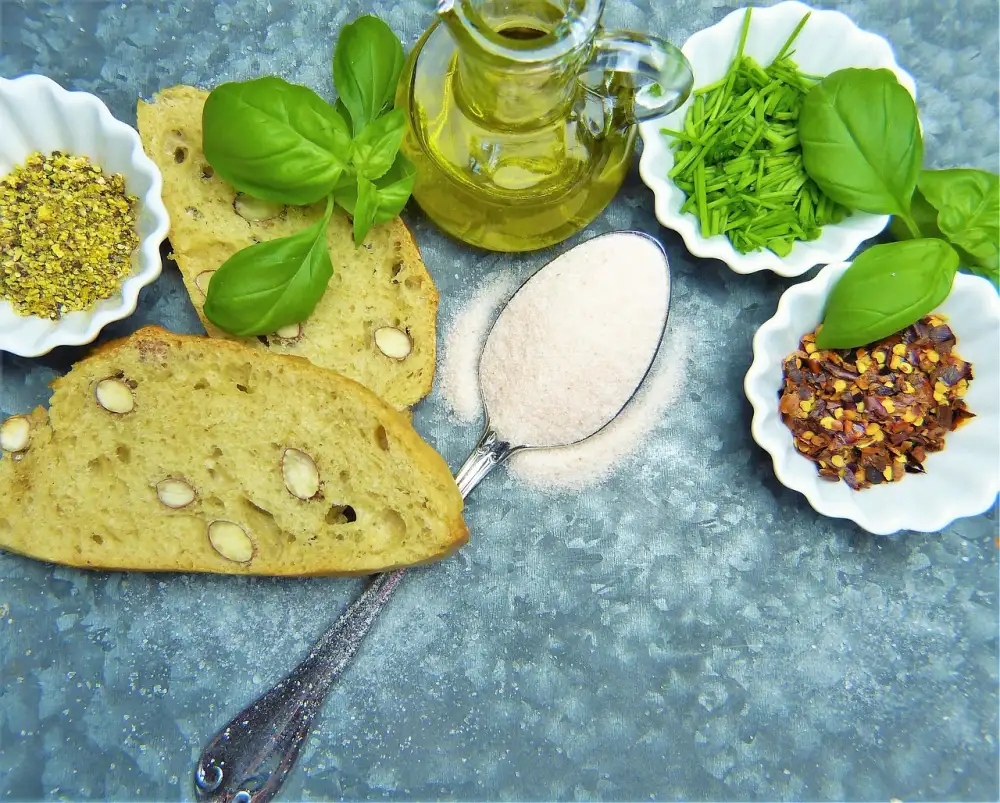Discover the Health Benefits of Gluten-Free Flour: A Guide to Wheat-Free Baking

Gluten-free flour has gained popularity in recent years as more people are becoming aware of the health benefits it offers. This type of flour is made from grains or starches that do not contain gluten, a protein found in wheat, barley, and rye. By eliminating gluten from flour, individuals with gluten sensitivities or celiac disease can still enjoy a wide variety of baked goods without experiencing adverse reactions. In this guide, we will explore the world of gluten-free flour and discover how it can be used to create delicious and nutritious dishes.
Understanding Gluten and its Impact on Health
Gluten is a protein found in wheat, barley, and rye. For some individuals, consuming gluten can lead to various health issues. One such condition is celiac disease, an autoimmune disorder that damages the small intestine and inhibits nutrient absorption. Another condition is gluten sensitivity, where individuals experience symptoms like bloating, diarrhea, and fatigue after consuming gluten. Eliminating gluten from the diet can alleviate these symptoms and improve overall health. It's important to understand the impact of gluten on our bodies in order to make informed choices about our diet.
Benefits of Using Gluten-Free Flour
Using gluten-free flour in your baking can provide numerous benefits for your health. One of the main advantages is that it allows individuals with gluten sensitivities or celiac disease to enjoy a wide range of delicious baked goods without experiencing any negative side effects. Gluten-free flour also promotes better digestion as it is easier for the body to break down and absorb compared to traditional wheat flour. Additionally, using gluten-free flour can help stabilize blood sugar levels, making it a suitable option for those managing diabetes or looking to maintain stable energy throughout the day. Furthermore, gluten-free flour is often enriched with essential nutrients such as iron, calcium, and fiber, which are beneficial for overall health and well-being. By incorporating gluten-free flour into your baking, you not only enhance the taste and texture of your creations but also prioritize your health and dietary needs.
Types of Gluten-Free Flour Available
When it comes to gluten-free baking, there are several types of flour available as alternatives to traditional wheat flour. These options provide a variety of flavors and textures, allowing you to experiment and create delicious gluten-free treats.
1. Rice Flour: Made from finely ground rice, this flour is a popular choice for gluten-free baking. It has a neutral flavor and works well in cakes, cookies, and bread.
2. Almond Flour: Made from blanched almonds, this flour adds a nutty flavor and moist texture to baked goods. It is rich in protein and healthy fats, making it a nutritious option.
3. Coconut Flour: Derived from dried coconut meat, this flour is high in fiber and adds a subtle coconut flavor to recipes. It absorbs liquid well, so it's important to adjust the amount of liquid when using it.
4. Buckwheat Flour: Despite its name, buckwheat is not related to wheat and is naturally gluten-free. This flour has a slightly earthy taste and works well in pancakes, muffins, and bread.
5. Quinoa Flour: Made from ground quinoa seeds, this flour offers a mild nutty flavor and is packed with protein. It can be used in various recipes like cookies, cakes, or as a thickener for sauces.
6. Chickpea Flour: Also known as gram flour or besan, chickpea flour is made from ground chickpeas. It has a distinct flavor and works well in savory dishes like flatbreads or fritters.
7. Potato Starch: This fine white powder is extracted from potatoes and provides moisture to baked goods while adding lightness to the texture.
These are just some of the many types of gluten-free flours available on the market today. Each brings its own unique characteristics to your baking endeavors, allowing you to explore new flavors while catering to dietary restrictions or preferences.
Nutritional Value of Gluten-Free Flour
Gluten-free flour is not only a great alternative for those with gluten sensitivities or celiac disease, but it also offers several nutritional benefits. Most gluten-free flours are made from whole grains such as rice, quinoa, millet, and sorghum. These grains are rich in fiber, vitamins, and minerals like iron and magnesium. They provide essential nutrients without the negative effects of gluten. Additionally, gluten-free flours often contain higher protein content compared to traditional wheat flour. This makes them a valuable source of plant-based protein for individuals following a vegetarian or vegan diet. By incorporating gluten-free flour into your baking recipes, you can enjoy the nutritional advantages it offers while still indulging in delicious treats.
Tips for Baking with Gluten-Free Flour
When baking with gluten-free flour, it's important to keep a few tips in mind to achieve the best results. Firstly, it's crucial to follow recipes specifically designed for gluten-free baking, as traditional recipes may not work well with gluten-free flour. Secondly, consider using a blend of different gluten-free flours to create a more balanced texture and flavor. Additionally, adding xanthan gum or guar gum can help improve the elasticity and structure of baked goods. It's also recommended to increase the liquid content slightly, as gluten-free flours tend to absorb more moisture. Lastly, be patient and allow your baked goods to cool completely before handling or slicing them, as they may be more delicate than those made with wheat flour. By following these tips, you can enjoy delicious and successful gluten-free baking experiences.
Incorporating Gluten-Free Flour into a Healthy Diet
Integrating gluten-free flour into your daily meals can be a simple and effective way to maintain a healthy diet. Start by replacing regular flour with gluten-free alternatives in your favorite recipes, such as pancakes, muffins, and bread. Experiment with different types of gluten-free flour to find the one that suits your taste and dietary needs. Additionally, try incorporating more whole grains and nutritious ingredients like fruits, vegetables, and lean proteins into your gluten-free baked goods for added health benefits. By making these small changes, you can enjoy the versatility of gluten-free flour while nourishing your body at the same time.
Addressing Common Concerns about Gluten-Free Flour
Despite the numerous health benefits of gluten-free flour, there are some common concerns that people have. One concern is the taste and texture of baked goods made with gluten-free flour. Many worry that without gluten, their favorite treats will be dry and crumbly. However, with the right combination of ingredients and techniques, it is possible to achieve moist and delicious results.
Another concern is the cost of gluten-free flour. It is true that gluten-free products can be more expensive than their wheat counterparts. This is mainly due to the higher cost of sourcing alternative grains and ensuring they are processed in a dedicated gluten-free facility. However, it's important to remember that investing in your health is worth it.
Some individuals also worry about the limited availability of gluten-free flour. While it may have been difficult to find in the past, nowadays there are many options available both online and in stores. From rice flour to almond flour, there is a wide variety to choose from, making it easier than ever to bake without gluten.
Lastly, some people question whether a gluten-free diet is necessary for everyone. While those with celiac disease or gluten sensitivity must avoid gluten for their health, others may wonder if they should follow suit. It's important to note that not everyone needs to eliminate gluten from their diet unless advised by a healthcare professional.
By addressing these common concerns about gluten-free flour, we hope to encourage more individuals to explore its benefits and incorporate it into their baking endeavors. With proper knowledge and experimentation, you can create delicious and nutritious baked goods without compromising on taste or texture.
In conclusion, embracing the versatility of gluten-free flour opens up a world of possibilities for those with dietary restrictions or health concerns. Not only does it provide an alternative for individuals with gluten intolerance or celiac disease, but it also offers a range of health benefits. From improved digestion to increased energy levels, gluten-free flour can be a valuable addition to any kitchen. So why not explore the endless options and unleash your creativity in wheat-free baking? Discover the delicious flavors and nourishing qualities of gluten-free flour today!
Published: 12. 12. 2023
Category: Health



